The symbiotic coexistence of humans, flora and fauna within our cities is the cornerstone of a sustainable and harmonious future.
Through a meticulous analysis of data extracted from the site and a comprehensive understanding of Barcelona’s climatic conditions, our visionary project sets its sights on the future, envisioning Barcelona in the year 2050 as a harmonious blend of urban living and natural serenity. At the heart of our exploration lies the theme of urban forestry, a paradigm shift in architectural design that strives to seamlessly integrate nature within the urban fabric.
In our pursuit of a sustainable and vibrant future, we have ingeniously conceived a building designed to house not only a community of 2700 individuals but also a thriving forest ecosystem. The crux of our innovation lies in the fusion of climatic data analysis and cutting-edge design technology. Leveraging Grasshopper scripts, we’ve meticulously calibrated the building’s form to respond dynamically to the climatic nuances of Barcelona.
In essence, our project not only envisions a sustainable and nature-infused urban future for Barcelona but also stands as a testament to the innovative fusion of data-driven design, climatic responsiveness, and human-centric aesthetics. As we propel ourselves toward 2050, our building stands as a symbol of progress, embodying the potential for a symbiotic relationship between urbanity and the natural world.
SITE ANALYSIS
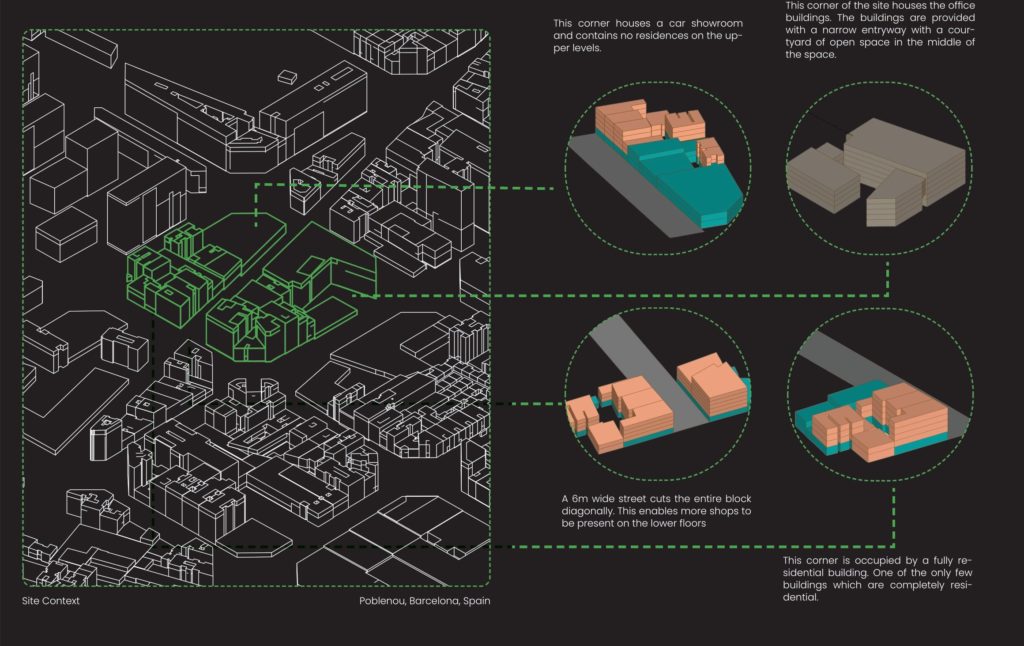
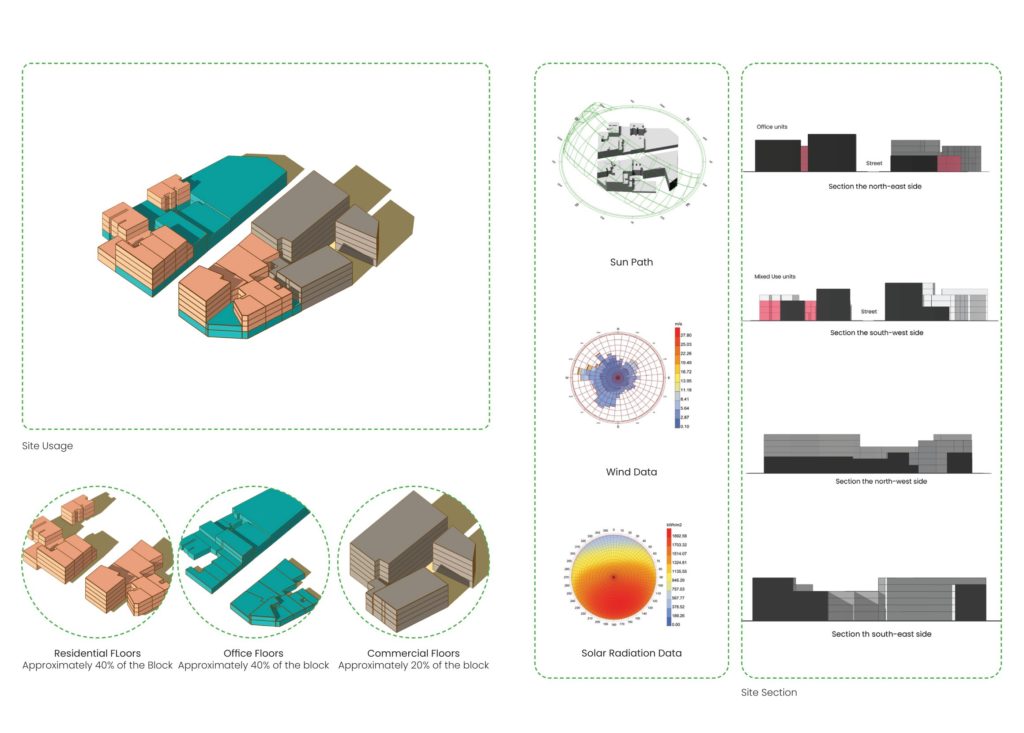
HOW WE CAN ACHIEVE OUR GOAL OF 2700 INHABITANTS IN A URBAN GRID OF BARCELONA BY 2050?

The rising population in Barcelona by 2050 could significantly impact the world, particularly in the context of architecture and urban planning. Sustainable architecture practices, such as efficient use of resources, creation of livable spaces, promotion of biodiversity, and innovative design, can help manage this growth. These practices not only make the city more livable for its growing population but also reduce environmental impact. Barcelona’s approach to managing population growth through sustainable architecture and urban planning could serve as a model for other cities, contributing to global sustainability efforts.
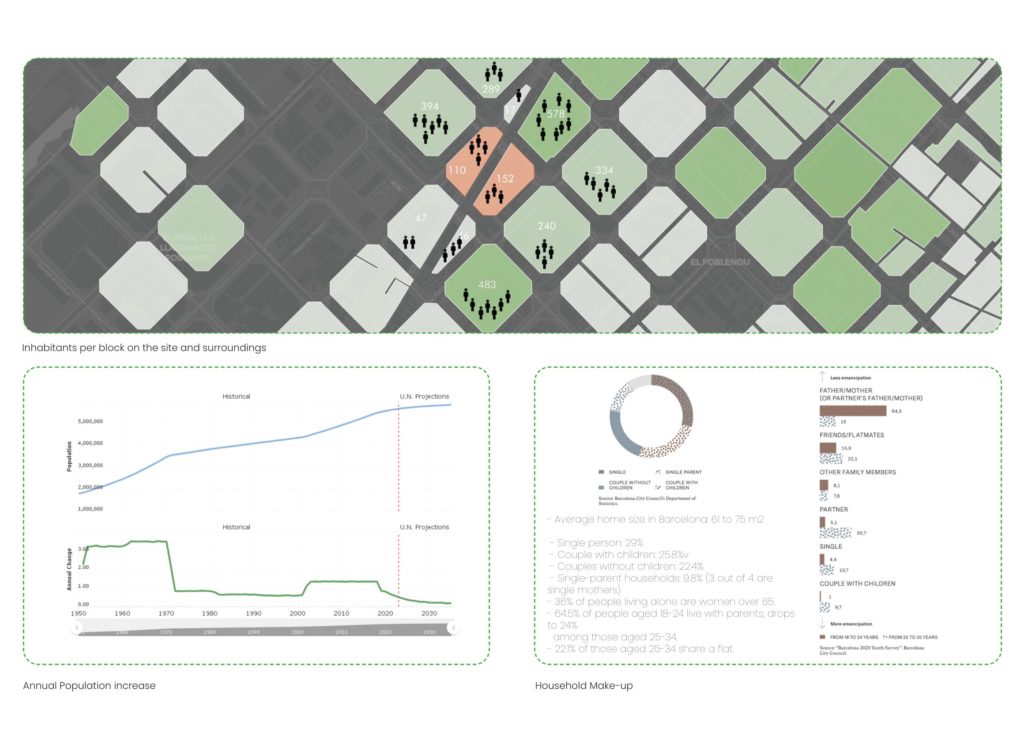
INTRODUCING CO LIVING
What is Co Living ??
Co living, a modern form of communal living, can significantly benefit Barcelona’s population growth. By offering affordable, flexible, and community-oriented housing options, co living can accommodate the city’s growing population. It provides an affordable solution for students, workers, and individuals relocating, fostering a sense of community and offering convenience through services like cleaning and utilities. As Barcelona’s population continues to increase, co living can play a key role in ensuring the city remains livable and vibrant.
Some benefits of co living:
Affordability
Convenience
Flexibility
Sustainability
Entrepreneurship
Co living vs Common Household

SANKEY DIAGRAM FOR HOUSING
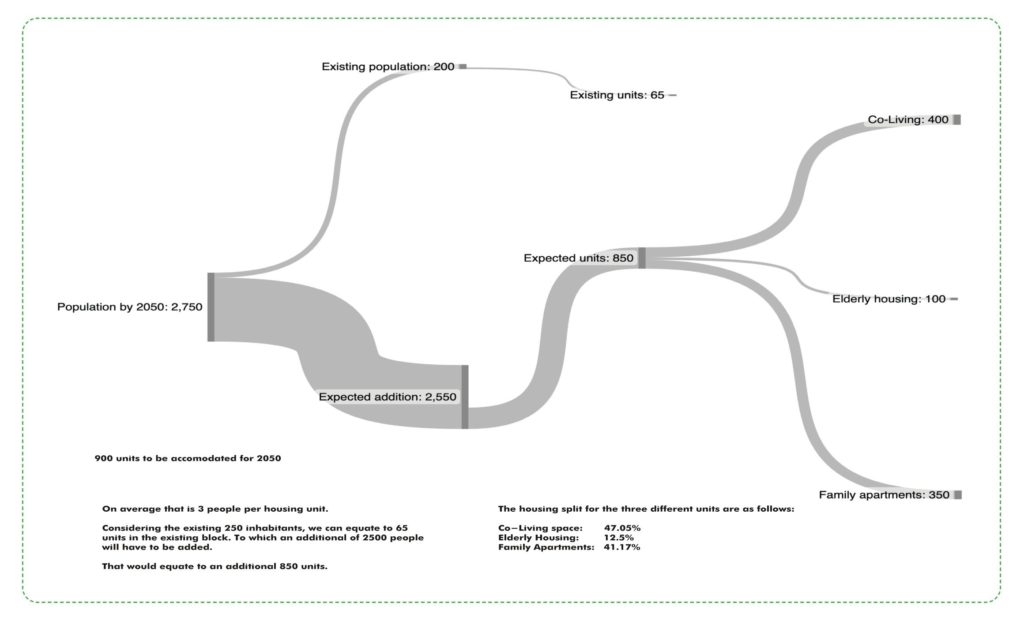
PHENOMENA
URBAN FOREST
An urban forest encompasses the trees and shrubs in an urban area including trees in yards, along streets and utility corridors, in protected areas, and in watersheds. This includes individual trees, street trees, green spaces with trees, and even the associated vegetation and the soil beneath the trees. In many regions, urban forests are the most extensive, functional, and visible form of green infrastructure in cities. Green infrastructure is the natural and semi-natural infrastructure within a city that provides ecosystem services like storm water management or air pollution abatement.
What Challenges Do Urban Forests Face?

PARAMETERS
01 Sunlight
02 Trees
03 Root Depth
04 Slab Thickness
05 Water
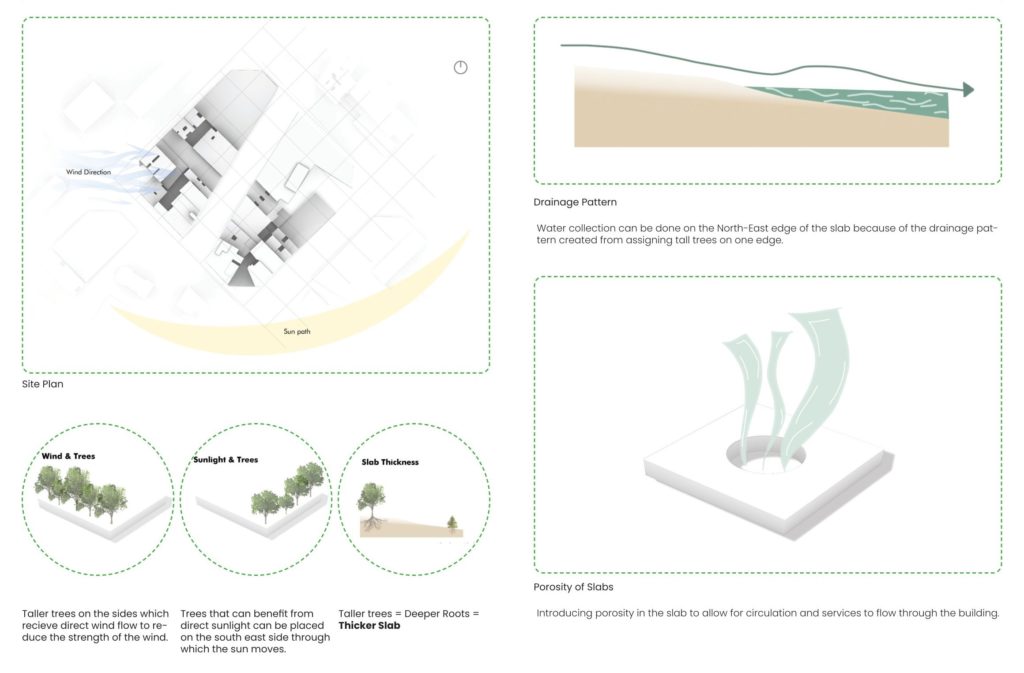
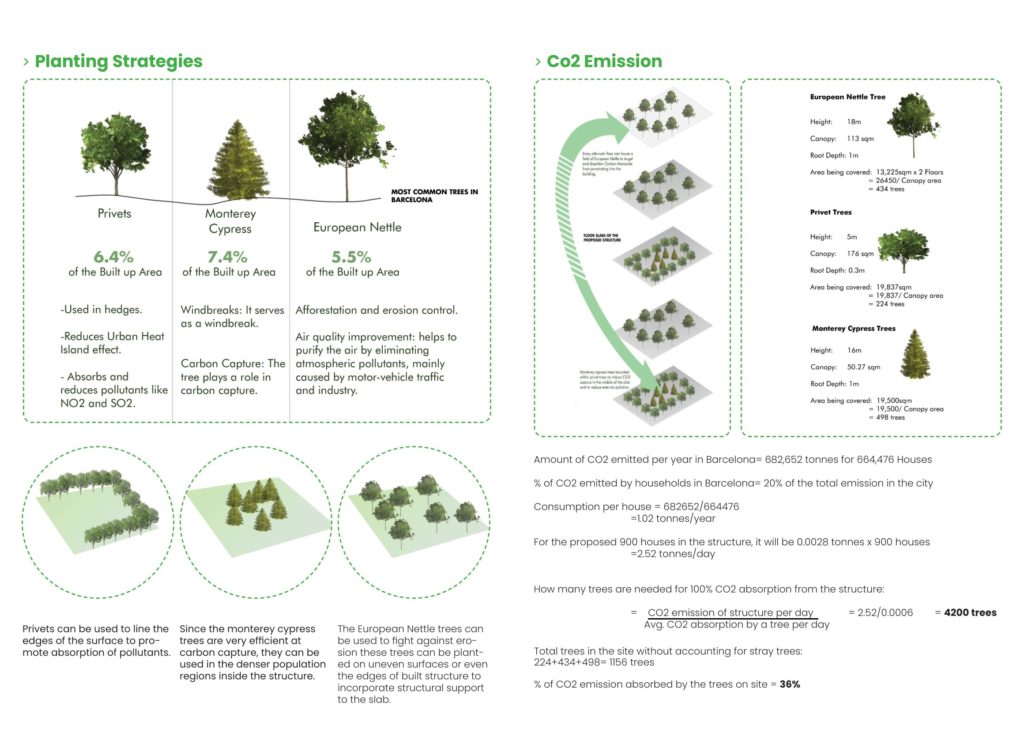
DIAGRAMS
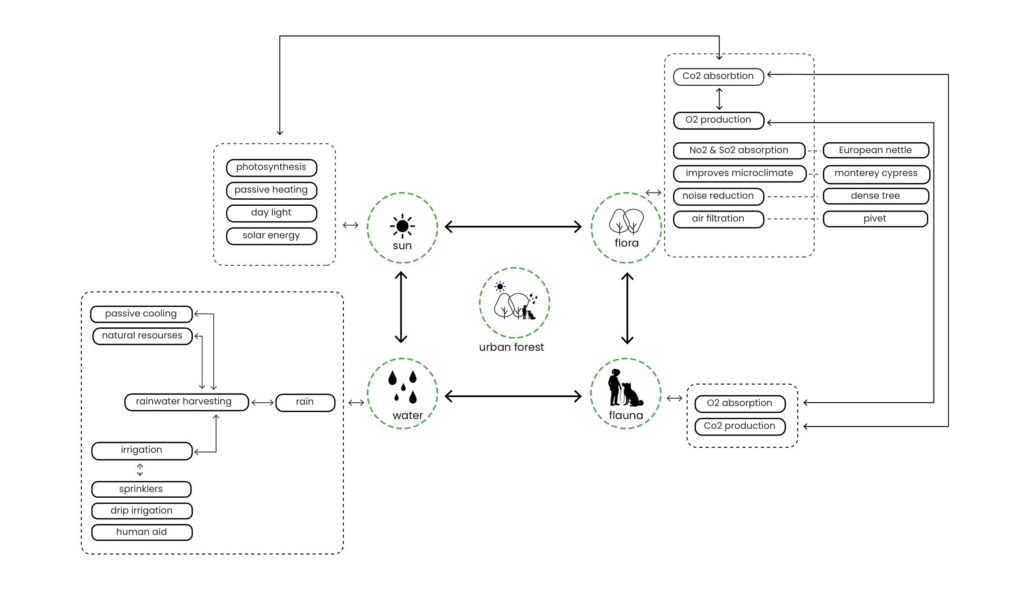
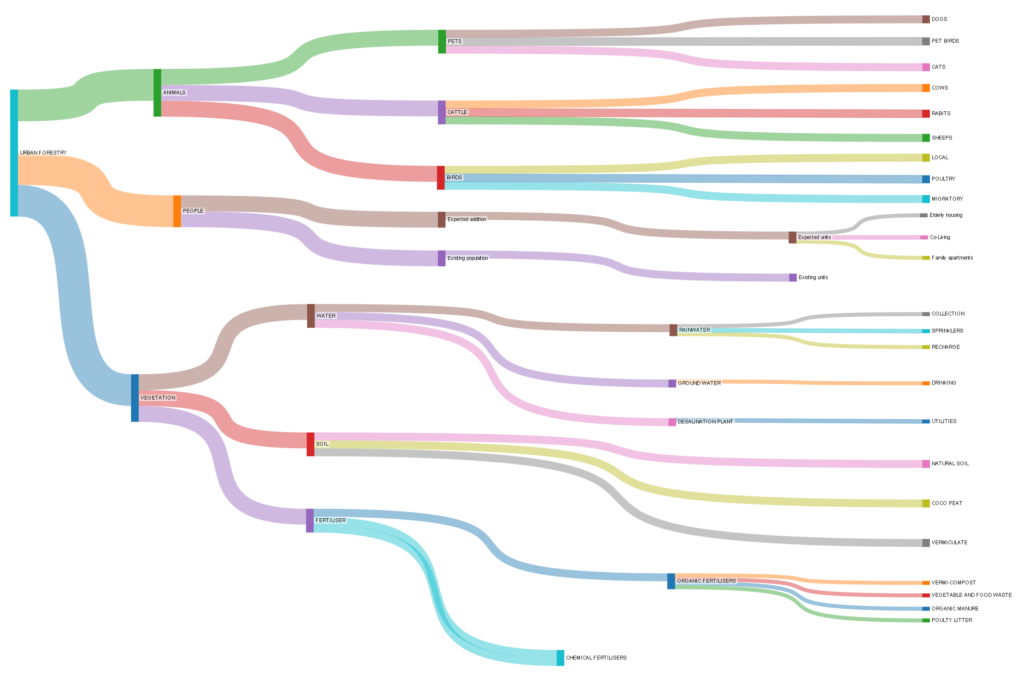
PROPOSAL
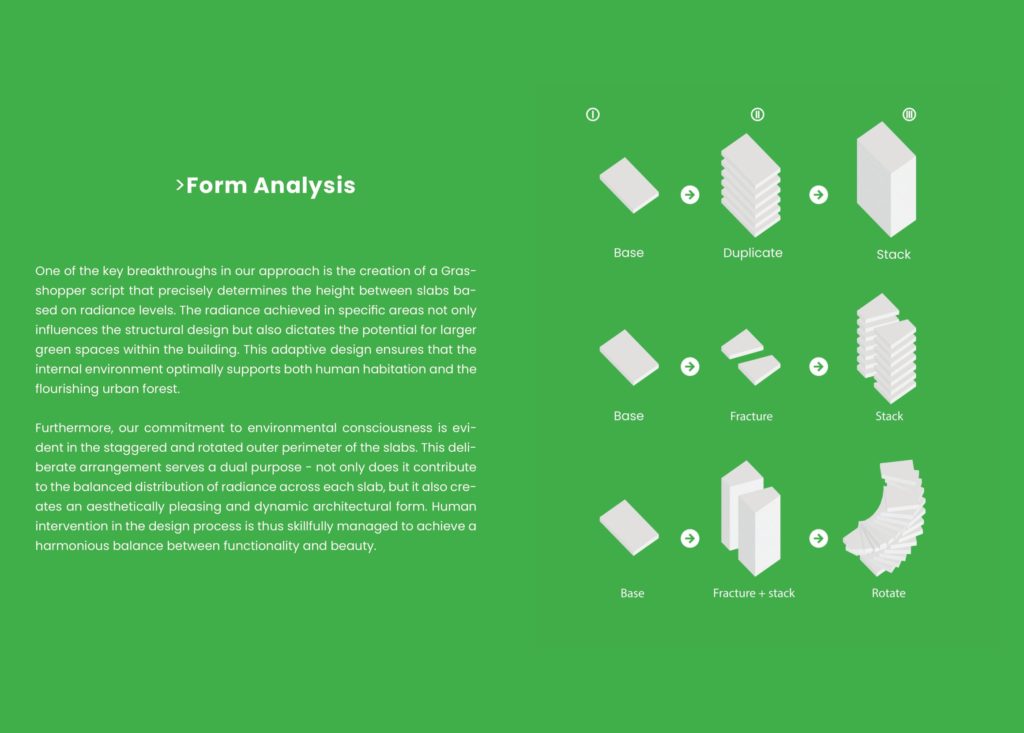
FORM GENERATION BASED ON RADIATION ANALYSIS
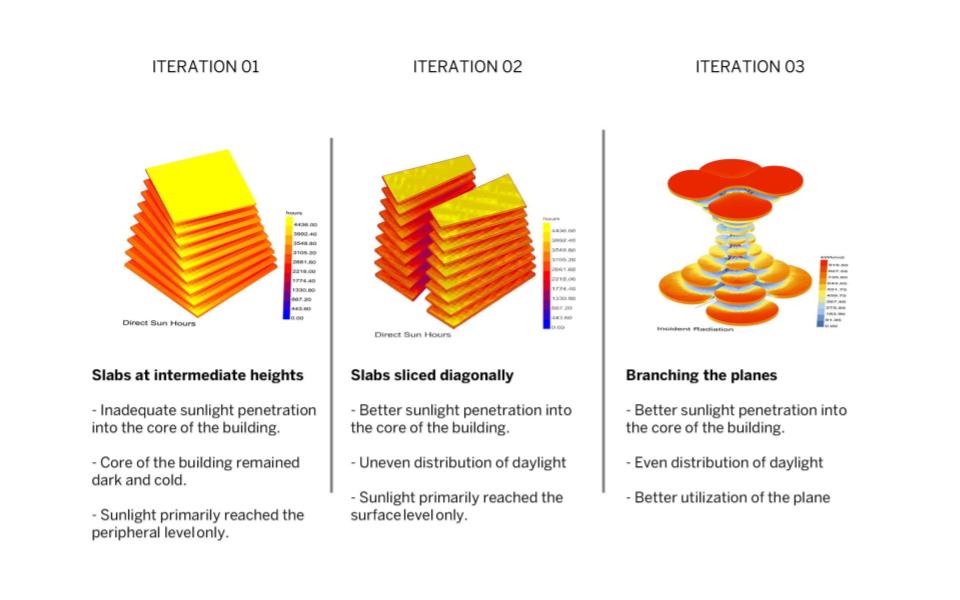

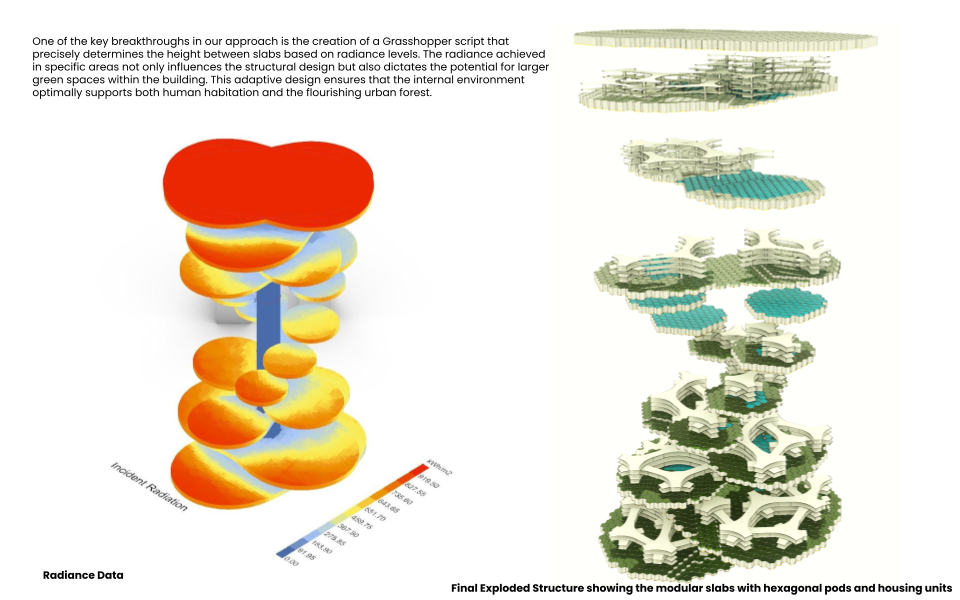
SLAB
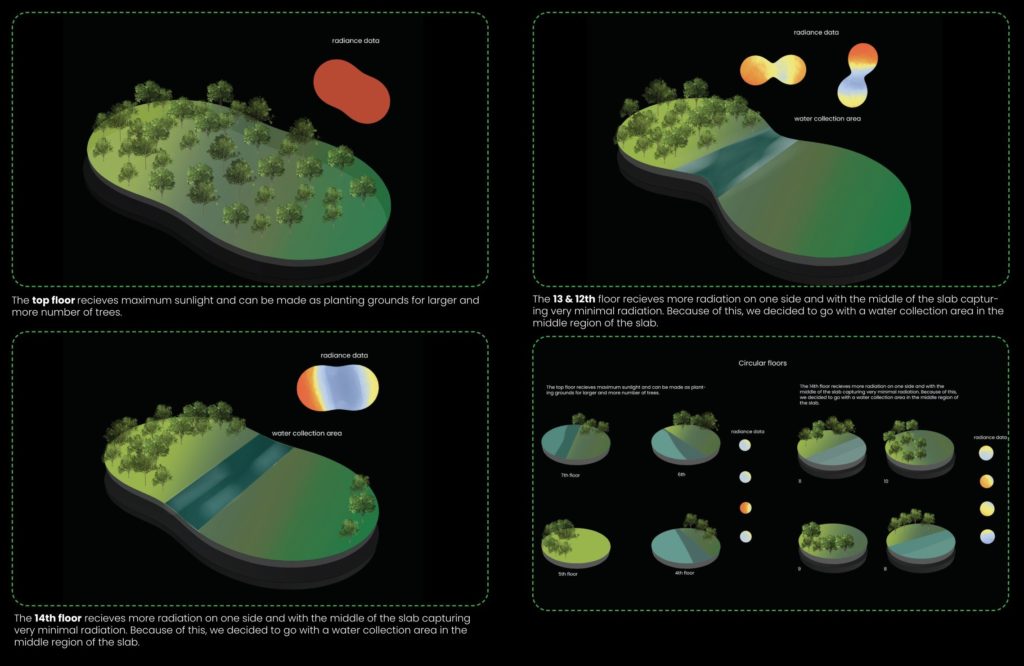
AXONOMETRIC SECTION
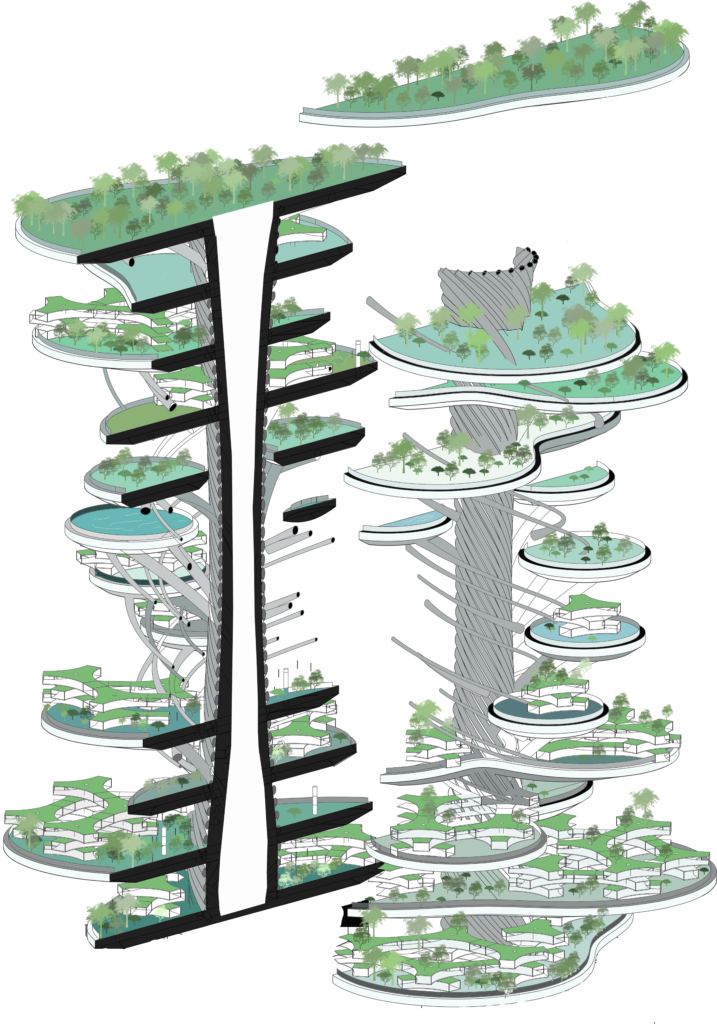
PREFAB ELEMENTS
PREFAB SLAB

PREFAB HOUSING
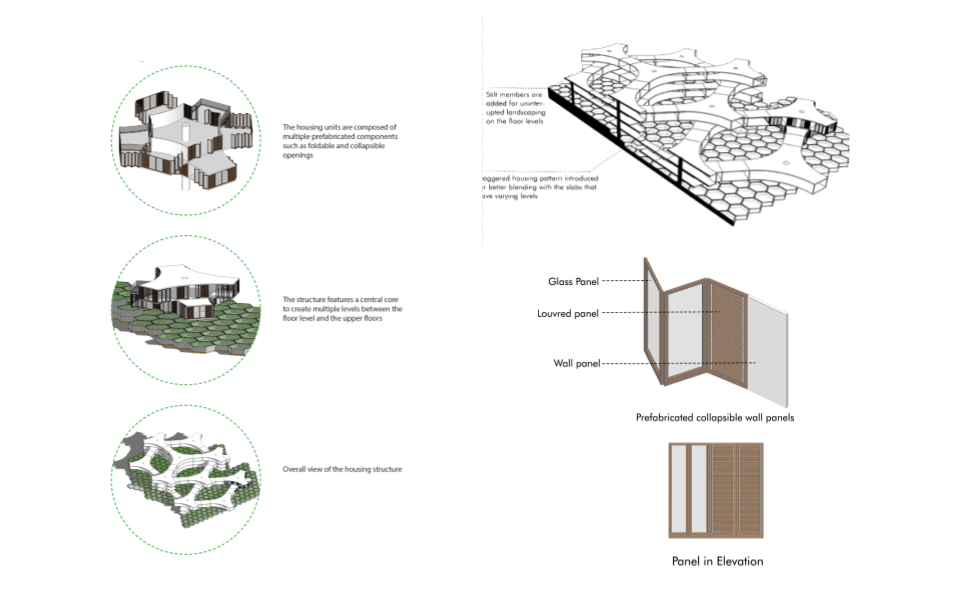
PROTOTYPE
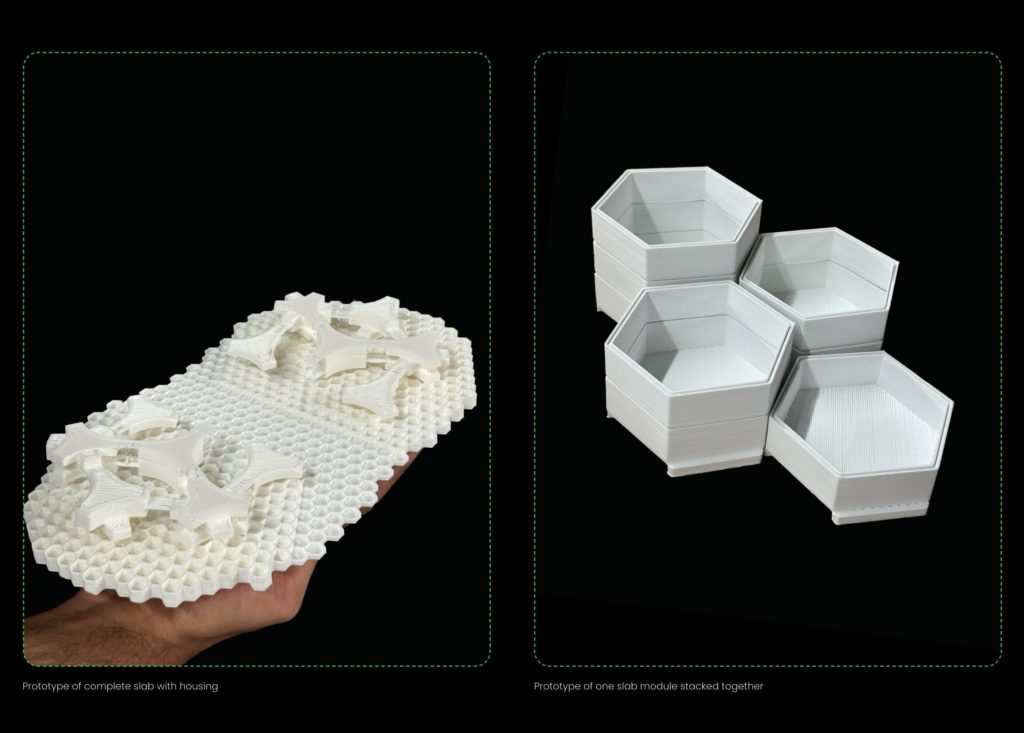
RENDER
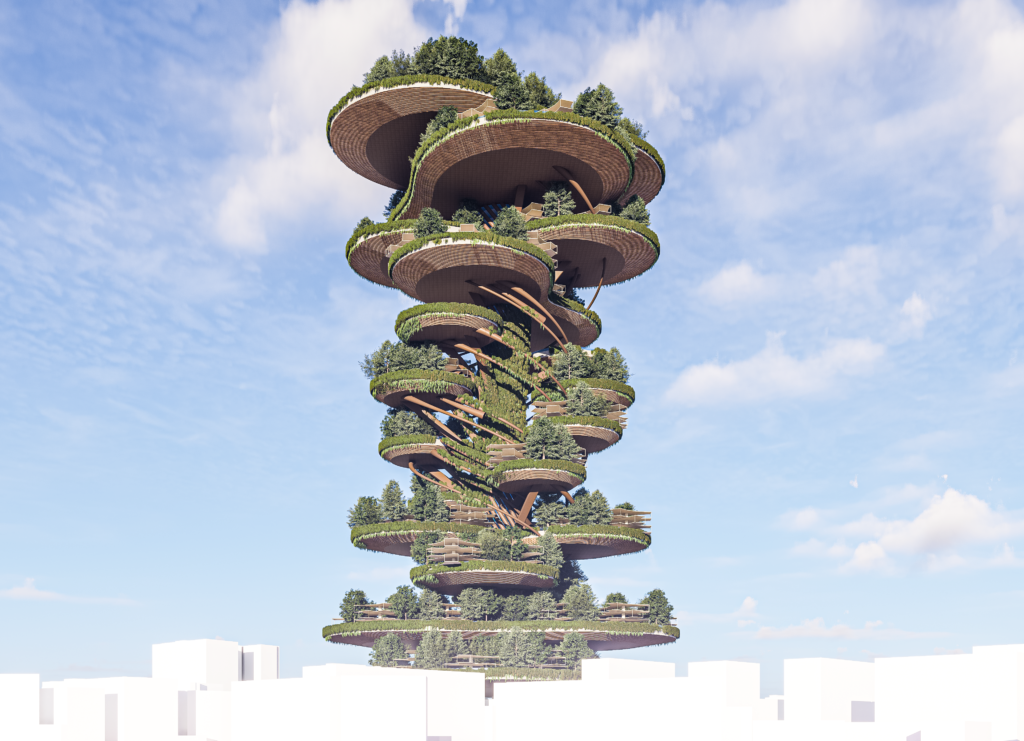
REFERENCE
- Idescat figures- https://www.idescat.cat/tema/xifpo?lang=en
- Ajuntament de Barcelona- https://www.barcelona.cat/ca
- “Bringing Nature Home” by Douglas W. Tallamy
- https://www.uforest.eu/news/insights/barcelona-green-infrastructure/
- https://www.archdaily.com/801120/raised-gardens-of-sants-in-barcelona-sergi-godia-plus-ana-molino-architects
- https://climate-adapt.eea.europa.eu/en/metadata/case-studies/barcelona-trees-tempering-the-mediterranean-city-climate/11302639.pdf
- https://www.c40knowledgehub.org/s/article/Trees-for-Life-Master-Plan-for-Barcelona-s-Trees-2017-2037?language=en_US
- https://tree-nation.com/projects/urban-street-forest-barcelona/about
- https://www.bloomberg.com/news/articles/2017-05-17/how-built-out-barcelona-found-space-for-an-urban-forest
- https://tree-nation.com/projects/urban-street-forest-barcelona/about
- Canopy Cities: Protecting and Expanding Urban Forests, Timothy Beatley
- Routledge Handbook of Urban Forestry, Cecil C. Koninendijk van de Bosch
- Urban Forests and Trees: A Reference Book, Cecil C. Konijinendijk
- Urban Forests: A Natural History of Trees and People in the American Cityscape

